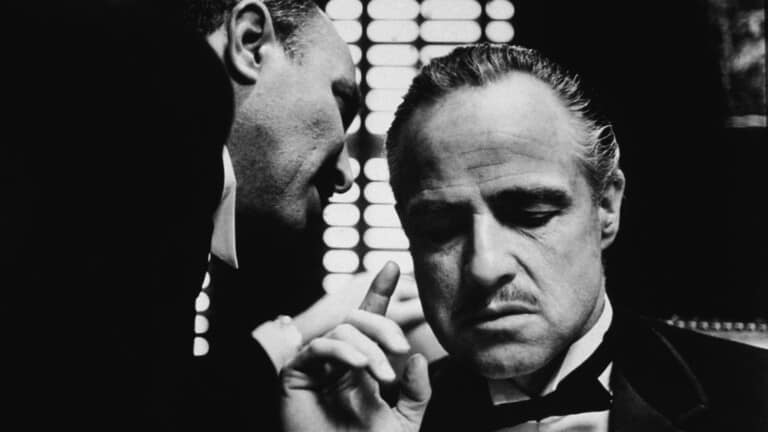There is a parallel between Organized Crime and the movie industry. Organized Crime was one of the ways for social climbing, of getting out of poverty and ethnic matters.
In the main Hollywood studios, many directors were ethnics: Samuel Goldwyn and Louis Mayer (M.G.M. studios: Metro Goldwyn Mayer), David O. Selznick, Charles Chaplin…
The cinema was a new technology founded by the elite, the ethnic entrepreneurs and the W.A.S.P. businessmen. Some innovative sections of business were opened for the same reason (legitimate, profitable). These people found a renovation of the American Dream either in Organized Crime or in cinema.
Producers did not push gangster films for the simple reason that it was not that popular at the time. They gave the public what they wanted (and the WASPs were rather conservative). It is only when it generalized that gangster movies “took off”.
Another connection: several actors became movie stars because of their ethnic origins: James Cagney was Irish. (Public Enemy), Paul Muni was (Scarface)…
They brought the ethnic accent to the screen. They would have never been movie stars in classic films. It is thanks to the gangster movies and to the parallel made with Organized Crime.
Chicago beer wars
In Chicago, W. Dever was mayor from 1923 to 1927. He was not good at jailing gangsters, because of the reciprocity of exchanges between the gangsters and the politicians.
As a result, the gangsters widened their territory: Southside Beer Wars (1923-1928), and Westside Beer Wars (1924-1929).
The Irish were set against the Italians: was it for economic or ethnic matters? It was more economic. The gangs were created along ethnic lines but there were connections.
Famous gangsters in New York
Arnold Rothstein, Lepke Buchalter, Meyer Lansky and Ben Siegel, “Lucky” Luciano…
Gangster movies and censorship
Moral reason: by showing violence on screen you might induce violence to children and immigrants (stereotypes of being children). Since movies were not rated (not before 1962), once approved they could be seen by anyone.
Technical reason: their impact was very new. The sound technology and the editing dictated the pace of the film: the juxtaposition of murders and car crashes, a fast synthetic collection of acts of violence. Without the sound, this is not half as efficient: the soundtrack is part of the movie.
A film is a democratic form of art, seen by everyone (thus different from literature).
Gangster movies portrayed realistically what happened in American cities.
In Scarface, the archetypal symbol of the cross (symbol of death) can be found at strategic moments: when the pictures of the murder are in the newspaper: the place of the body is symbolized by a cross. It is a mise-en-scene of the feeling of realism.
Synopsis » Organized Crime in America during the Prohibition (1929-1951)
- Evolution of Organized Crime
- Organized Crime : Expression and Repression
- Organized Crime and the Prohibition
- Organized Crime in America
- Organized Crime: Repression and Censorship
